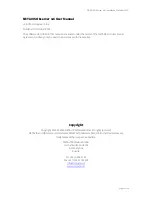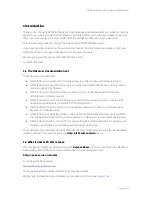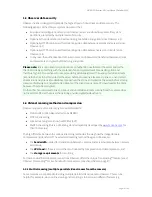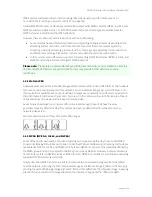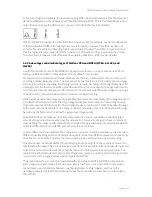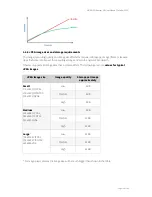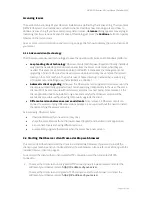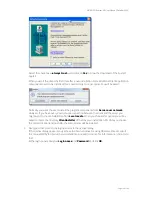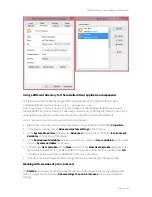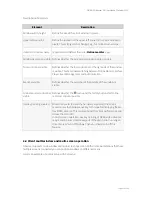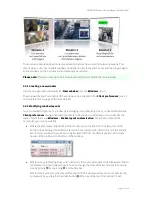
NETAVIS Observer 4.6 User Manual (October 2015)
Page 7 of 204
1.3 Observer data security
Observer has been designed to provide the highest level of robustness and data security. The
following aspects of the Observer system document that:
All video and configuration data on an Observer server are stored in separate file system
partitions, protected by multiple levels of security.
Optionally the video data can be stored using 128 bit AES encryption (since Observer 4.0)
Optionally HTTPS can be used for streaming video data between cameras and servers (since
Observer 4.0).
Optionally HTTPS can be used for streaming video data between server and clients (since
Observer 4.2).
In any case, the authentication data (user names and passwords) transferred between clients
and servers are encrypted by MD5 strong encryption.
Please note:
Encryption and decryption can mean higher CPU overhead at the server and/or the
client. Also doing something with the contents of an encrypted stream means decryption and
therefore higher CPU overhead. For example, doing video analytics with an encrypted video stream
means that is has to be decrypted at the server before processing. Likewise, storing an unencrypted
stream in an encrypted video database means that it has to be encrypted at the server before storing.
Likewise, displaying an encrypted video stream at the client means more CPU overhead at the client
because it has to be decrypted.
On the other hand, simply storing an already encrypted video stream coming from the camera does
not need more CPU at the server than storing an unencrypted video stream.
1.4 Video streaming methods and compression
Observer supports video streaming in several standards:
Motion JPEG (often also referred to as MJPEG)
MPEG-4 streaming
H.264 streaming (also known as MPEG-4/AVC)
MxPEG streaming (this is a streaming standard specially developed by
www.mobotix.com
for
their IP cameras)
The big difference between the various streaming methods is the way how the image data are
compressed and transferred. The selected streaming method has great influence on:
the
bandwidth
needed for transmission between cameras and server but also between servers
and clients,
the
CPU load
at the server and the client induced by compression and decompression, and
the
storage requirements
for recording
For low-bandwidth client-server connections Observer offers the unique Transcoding™ feature (see
2.7
Observer Transcoding™ for low-bandwidth client-server connections (ABS)
on page 27).
1.4.1 Multi streaming (multiple parallel video streams from the camera)
Some cameras are capable of providing multiple parallel video streams to Observer. This can be
helpful, for example, when online viewing and recording is to be done in different formats (e.g.


